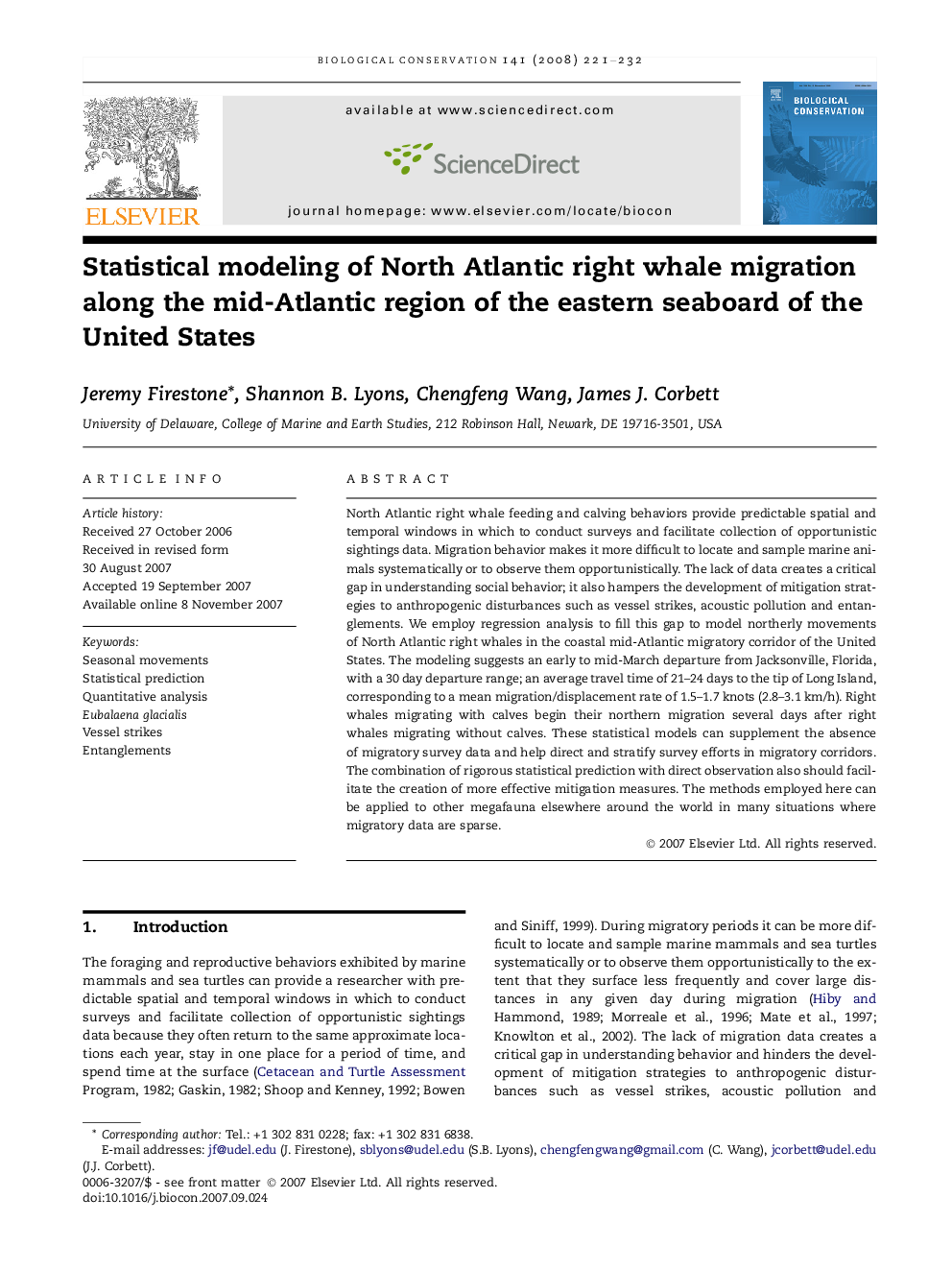| Article ID | Journal | Published Year | Pages | File Type |
|---|---|---|---|---|
| 4386887 | Biological Conservation | 2008 | 12 Pages |
North Atlantic right whale feeding and calving behaviors provide predictable spatial and temporal windows in which to conduct surveys and facilitate collection of opportunistic sightings data. Migration behavior makes it more difficult to locate and sample marine animals systematically or to observe them opportunistically. The lack of data creates a critical gap in understanding social behavior; it also hampers the development of mitigation strategies to anthropogenic disturbances such as vessel strikes, acoustic pollution and entanglements. We employ regression analysis to fill this gap to model northerly movements of North Atlantic right whales in the coastal mid-Atlantic migratory corridor of the United States. The modeling suggests an early to mid-March departure from Jacksonville, Florida, with a 30 day departure range; an average travel time of 21–24 days to the tip of Long Island, corresponding to a mean migration/displacement rate of 1.5–1.7 knots (2.8–3.1 km/h). Right whales migrating with calves begin their northern migration several days after right whales migrating without calves. These statistical models can supplement the absence of migratory survey data and help direct and stratify survey efforts in migratory corridors. The combination of rigorous statistical prediction with direct observation also should facilitate the creation of more effective mitigation measures. The methods employed here can be applied to other megafauna elsewhere around the world in many situations where migratory data are sparse.
